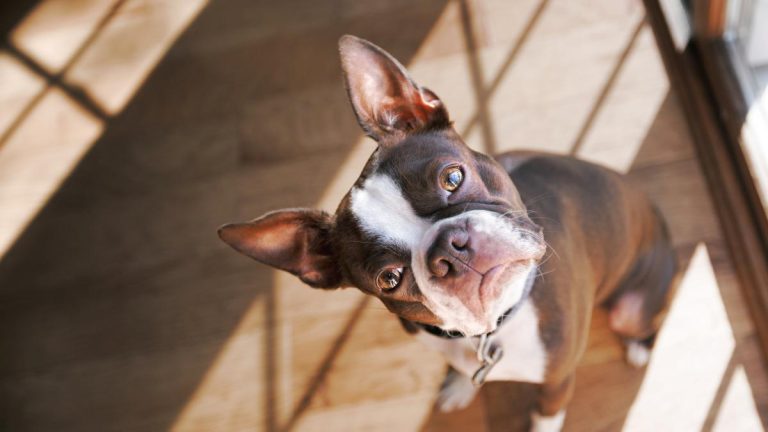Basal Dog Breeds

It’s safe to say that at least 90% of our modern dog breeds, whether they are recognized by a known kennel club or not, are the result of human influence—that is, crossbreeding, inbreeding or outbreeding or even selective breeding.
The average person has at least a fundamental understanding of the difference between a purebred dog and a mixed breed, or even that there are mixed breeds that are known to breed true (thus putting them into a sort of grey area between being a purebred and a random mix).
Without even considering mixed breeds, the pure breeds are usually divided into 7 basic groups, as follows:
- Sporting
- Hound
- Toy
- Non-Sporting
- Working
- Herding
- Terrier
Some kennel clubs subdivide into even more groups, and some breeds may seem to belong to several groups based on their breed name and their typical function. For example, while the Yorkshire Terrier might seem to belong in the Terrier group based on its name, it is actually considered to be part of the Toy group.
All of this falls into the realm of knowledge that most dog owners have in their repertoire, whether they are first-time owners or afficionados or even breeders. When we get beyond the types and classes of purebred dogs, cynology gets a little harder to navigate.
Let’s explore a distinction that literally forms the foundation of every single dog breed out there: the difference between Basal Breeds and Ancient Breeds. While the term “Ancient Breed” is literally what it sounds like (breeds who originated centuries ago), the term “Basal Breed” is not as clear.
Exactly What is a Basal Breed?

According to the Oxford Dictionary, the word “basal” is an adjective that means “forming or belonging to a bottom layer or base.”
As it relates to dog breeds, the word “basal” applies to the 16 dog breeds that are known to be the foundation for our modern breeds. Many of these breeds existed centuries ago, but some of them are modern crosses (whose foundation breeds are 100% basal). Literally every modern dog breed that we know of today— through a combination of crossbreeding, inbreeding and outbreeding— has a few basal breeds in their genetic makeup. It’s important to note, here, that the basal breeds are not all widely recognized by kennel or breed-specific clubs.
Aren't Basal and Ancient the Same Thing?
In short, no.
Both types of dog breeds have contributed to the gene pool from which all breeds have emerged, so it would seem logical that the two terms mean basically the same thing, right?
Alas, that’s not the case.
The simplest way to put it is that the ancient dog breeds are literally the oldest known breeds, while the basal breeds are those that helped create our modern collection of breeds. While there are certainly similarities, not to mention some overlaps, there are also some fundamental differences.
Basal vs Ancient
Before we take a quick look at the similarities and distinguishing traits of both basal and ancient breeds, it’s important to acknowledge one thing: there is no one set of characteristics that can be applied equally to all the breeds that fall under the headings of basal and ancient. That is, the two are more like umbrella terms (such as “sporting”) rather than type indicators (such as “spitz”).
What is also important to acknowledge is that some of the basal breeds are also considered to be ancient breeds.
Basal:
- May be considered to be crossbreeds
- Can be ancient or modern
- Has the greatest influence on modern breed genetics
Here’s a quick list of the 16 Basal Breeds:
- Dingo
- New Guinea Singing Dog
- Afghan Hound
- Canaan Dog
- Akita
- Basenji
- Chow Chow
- Shar Pei
- Saluki
- Shiba Inu
- Alaskan Malamute
- Finnish Spitz
- Eurasier
- Siberian Husky
- American Eskimo Dog
- Samoyed
Ancient:
- Considered to be purebred
- Has significant influence on modern breed genetics
- Comprised of the oldest known breeds
Here’s a quick list of 10 of the most ancient dog breeds still in existence, some of which may also be basal:
- Basenji
- Shar-Pei
- Afghan Hound
- Akita
- Chow Chow
- Pharoah Hound
- Xoloitzcuintli
- Canaan Dog
- Tibetan Terrier
- Tibetan Mastiff
Some ancient breeds that provided the foundation for certain modern breeds are, unfortunately, extinct.
These are:
- Chiribaya
- Hawaiian Poi Dog
- Kuri
- John’s Water Dog
- Chinese Happa Dog
- Alpine Mastiff
- Hare Indian Dog
- Cumberland Sheepdog
- Molossus
- Bullenbeisser
Cynology is a fascinating field of research, especially when you consider that the Grey Wolf shares a common ancestor with the Chihuahua. On the face of things, it just doesn’t seem possible that two canids so obviously different can come from the same family tree. Moving further up that family tree to where dogs were not only domesticated but well into being purposely bred, we find that a handful of breeds contributed to the genetic makeup of every one of our extant dog breeds.
Every. Single. One.